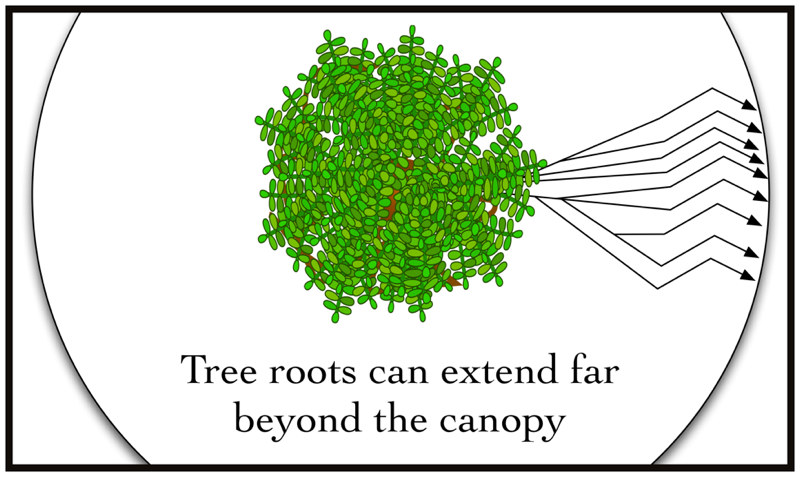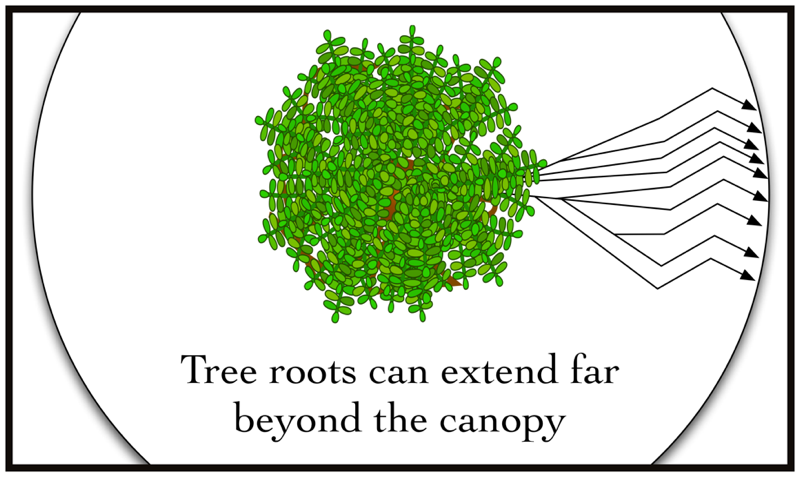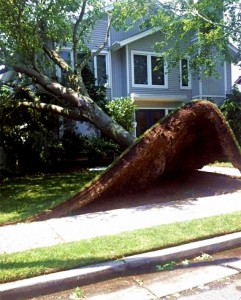Four Tips to Protect Trees from Storm Damage

It has been a rough year for trees in Baltimore, with several storms that resulted in significant damage to our urban forest. Although severe storms will always result in some uprooted and broken trees, thankfully some preventative steps can lessen the impact.
Knowing why trees succumb to storms, we can ensure that we take four easy steps to ensure our tree plantings weather future storms.
- Trees should be given plenty of room to grow. This means not just the trunk and branches, but also the roots: many mature trees naturally grow roots extending hundreds of feet from the trunk and this root zone should be protected from compaction. Minimize foot and vehicular traffic around young trees by planting shrubs or beds of native plants to discourage trampling, or reduce the impact of trampling by installing a walkway that allows water to infiltrate but that spreads the weight over a larger surface.
- Plant trees when they are small. Smaller trees – especially ones grown in root pruning containers like the ones we’ve begun using at Herring Run Nursery – establish robust root systems much more efficiently than larger trees.
- Remove the tree stakes quickly. Allowing the young tree to flex in the wind results in a stronger tree: the shape of the trunk is trained to be stronger, and the movement encourages root development.

Trees planted alone or in a lawn are more susceptible to wind damage than trees in groups. - Plant trees in groves. It is tempting to plant a single “specimen” shade tree, but it is much smarter to plant several of them in close proximity. Research conducted in Florida suggests that groups of five or more trees planted ten feet or less from each other are 33% less likely to be blown over.The tree roots will grow to interlock, and the roots of one tree can reinforce the roots of nearby trees. If you don’t have space for multiple trees, plant some large shrubs within a couple yards of any large trees you plant.
Additionally, some types of trees are much more susceptible to storm damage than others. People are often eager to plant evergreens, like pine trees, as privacy screens or wind blocks, but numerous studies show that these trees are much more likely to be damaged in storms.
Hardwood trees, like white oaks and hickories, are usually far more likely to survive a storm than pines or even fast-growing deciduous trees like red maple and birch. A study of the severe 1938 hurricane by Harvard foresters found that stands of pine trees were two to three times as likely as stands of white oaks to be blown over. Fast-growing trees should never be planted right next to a house or power line.

Finally, even storm clouds have a silver lining. Although Baltimore lost trees in Hurricane Sandy , we lost fewer than we would have if not for prior storms: the June 2012 derecho and the October 2011 winter storm culled many of our weakest trees. The losses from these storms have opened up space for new trees to be planted, and we can ensure that the trees we plant have a good chance to outlive any of us.
If you’d like to purchase a tree from Blue Water Baltimore for your own yard, our nursery will resume retail sales in April, 2013. And if you’d like inquire about organizing a tree planting campaign in your neighborhood, in a park, or at your school in the coming year you should contact us soon so we can begin to plan for a successful project.


